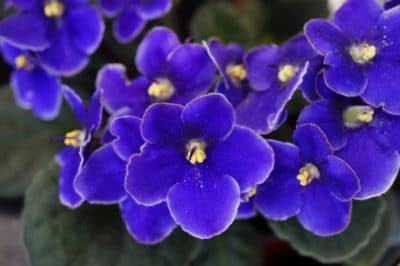African Violets in the Wild
The African violet – which isn’t actually related to the violet family – is a perennial plant found only in Kenya and Tanganyika. It grows in areas of high humidity and dappled shade. Originating near the equator, it is used to little change in light intensity no matter what the season. However, African violets must have eight hours of darkness to trigger blooming.
Plant Maturity and Bloom
The African violets you see in a grocery store or garden center are typically in bloom, as the blossoms are why people buy plants. This is a good indication the plants are mature, as blooming doesn’t occur until plants are six to nine months old. Once the plant reaches this age, any problems with blooming are usually related to environmental conditions or care.
Why Plants Stop Blooming
African violets that have previously bloomed may stop blooming for one or more reasons, including:
- Inadequate light; the plants need at least 10 hours of light a day.
- Lack of nutrients; regular bloom takes lots of food.
- Tight quarters; the plant may need more room for its roots.
- Temperatures – African violets are very cold-sensitive.
- Inadequate or irregular watering.
- Disease.
Put Light First
The single most important factor in getting African violets to bloom is light. While they cannot handle direct sun, they must have a minimum of 10 hours a day of bright, indirect light and eight hours of darkness. In temperate climates, the seasonal changes in winter may mean the plants need supplemental light. Western and southern exposures with translucent blinds or shades for sun protection will otherwise provide adequate light.
Fertilizing for Bloom
Constant bloom takes a lot of nutrients. Most experts recommend that you use a bloom booster every time you water (which may be daily in some cases). Regular African violet food usually has an NPK rating of 12-14-14. Bloom booster is more likely to be 12-36-14, indicating it has considerably more phosphorus. Using dilute fertilizer more frequently is better than using too much infrequently.
Plant Size and Repotting
African violets need relatively small pots because otherwise there is a risk that the excess soil will get soggy and induce rot. If growing fast – which you want them to be – they may quickly become pot-bound. Repot at least once a year. Some growers repot every three or four months.
